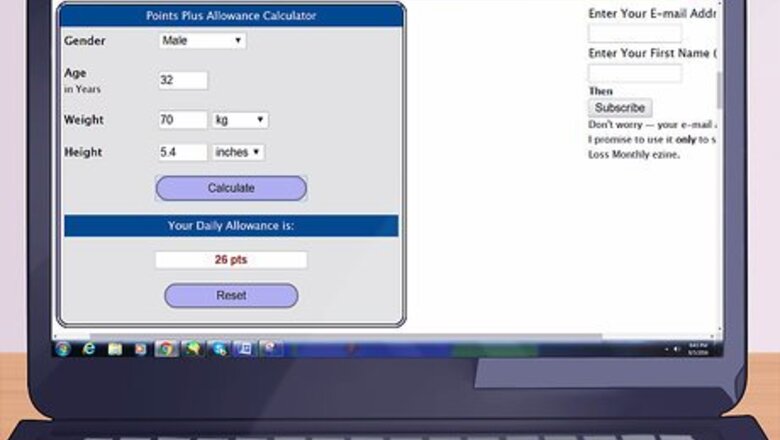
views
Calculating Points with the PointsPlus System
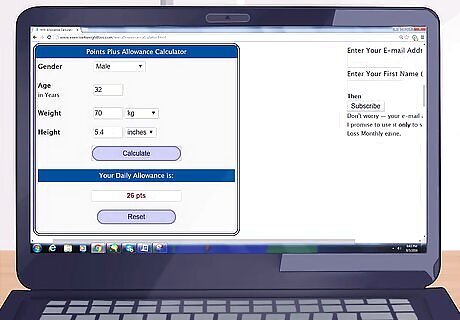
Use an online calculator to pinpoint your daily allowance. Making sure it uses the PointsPlus system! There are no two ways around it -- just getting a calculator is the simplest way. With the new formula, activity is assumed with your sex and certain numbers are weighted and there's a bunch of decimal places you really shouldn't have to worry about. Just to prove a point, the Total Energy Expenditure formula is:TEE = 387 - (7.31 x age) + (PA x ((10.9 x wgt) + (660.7 x Ht)) ...See? And that's just one formula of many.

Calculate your food points, too. The process of counting food points is different with the new system, too. You need to get a calculator and punch in the amount of protein, carbs, fat and fiber (no calories!) in the food you're eating. Once you do this enough times, it'll become old hat. Weight Watchers has reference material for most restaurants and food items, but if you run into the odd product that isn't pre-listed, you can figure it out with a few button pushes. This formula is a bit convoluted, too, if you want to do it yourself. Curious? It looks something like this:Points Plus = (Protein grams / 11) + (Carbohydrate grams / 9) + (Fat grams / 4) - (Fiber grams / 35) Here's another way of thinking about it: [(Protein grams x 16) + (Carbohydrate grams x 19) + (Fat grams x 45) + (Fiber grams x 5)]/175 Again, a calculator will be your best friend.
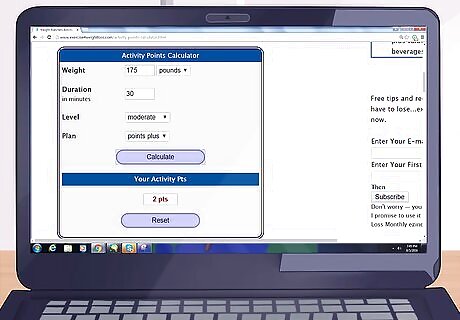
Find out how many activity points you have. There are a whole bunch of resources you can find online when it comes to calculating how many points you've earned for your workouts. Onemorepound.com has a good chart that can walk you through it. You'll need to know the intensity and duration of your workout and your weight. 30 minutes of a moderately intense workout for someone that weights 175 pounds is two points. If you wanted to eat that cheesecake, you'll need to work out for a spell, that's for sure. If it wasn't clear, activity points can be lobbed off your daily points usage. If you ate 27 points worth of food, but moderately exercised for 30 minutes, you're down to 25 (weight depending). Huzzah!
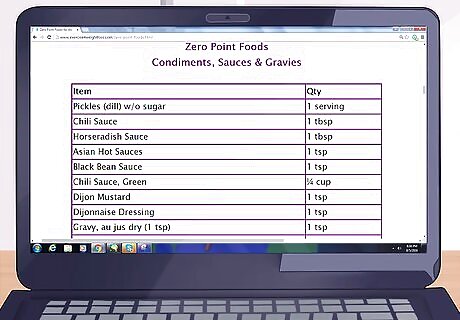
Know the "zero" foods. On this new program, all fruits and many veggies (but not all) are zero points. AWESOME. That's the way it should be. Check your materials or with your weight watcher buddies to find out which ones are on this list. But remember, eating 19 bananas is not the way to go. They should be snacks, not meals! However, they're not zero when they're combined in recipes. Be sure to include their content when you're finding out the point value of dishes you're creating.
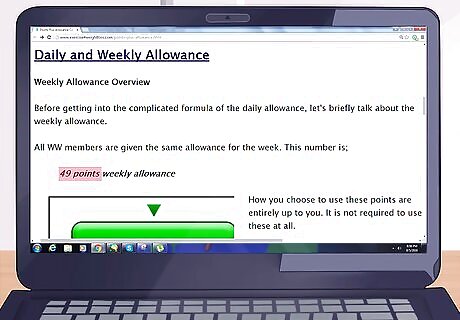
Use your 49 weekly PointsPlus points whenever and however you'd like. On this new system, you get 49 points to throw around freely. P.F. Chang's, anyone?
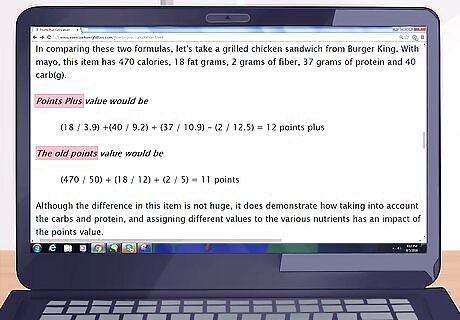
Know the differences between the systems. The reason the old system got revamped is because it had too much emphasis on calories. If you got confronted with a small bag of cookies and an apple (eat these or your family gets it!), they'd have similar point values. You had no reason to go for the apple over the cookies, even though it's obviously healthier. That being said, both systems do lead to watching calories -- a basic tenant of losing weight. If the original system is easier for you, choose it. If it's easy, you'll stick with it! In general, most foods have higher point values with the new system (apart from fruits and veggies, which are often 0). However, you'll probably have a higher daily allowance, too.
Calculating Points with the Original System
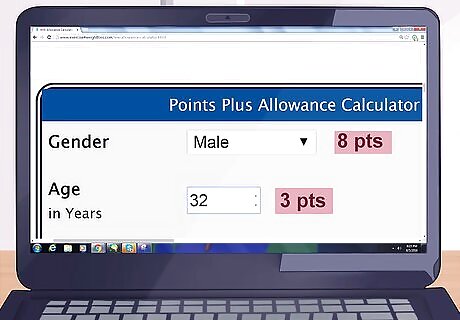
Start the point analysis for your daily allowance with your sex and age. The energy requirement of every person is individual and thus the number of points you may consume can differ among different people. Just answer the following questions and add all the points up. Sex: a) Female - 2 POINTS If you're nursing, that's 12 points. b) Male - 8 POINTS Age 17-26 - 4 POINTS 27-37 - 3 POINTS 38-47 - 2 POINTS 48-58 - 1 POINT Over 58 - 0 POINTS
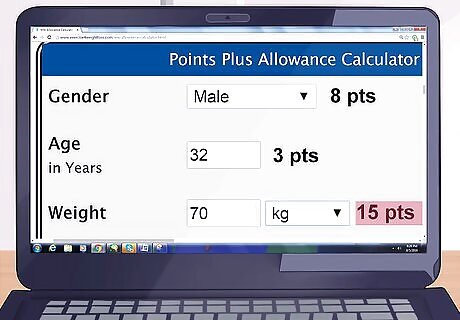
Add in your weight. How much do you weigh in pounds? You'll have to note the first two digits (or first digit if you're under 100 pounds). To convert to pounds from kilograms, simply multiply your weight by 2.2 (for example, a person weighing 70 kg weighs 154 lbs). 90 - 99 lbs - 9 POINTS 100 - 109 lbs - 10 POINTS 110 - 119 lbs - 11 POINTS 120 - 129 lbs - 12 POINTS 130 - 139 lbs - 13 POINTS 140 - 149 lbs - 14 POINTS 150 - 159 lbs - 15 POINTS 160 - 169 lbs - 16 POINTS 170 - 179 lbs - 17 POINTS 180 - 189 lbs - 18 POINTS And so on and so forth.
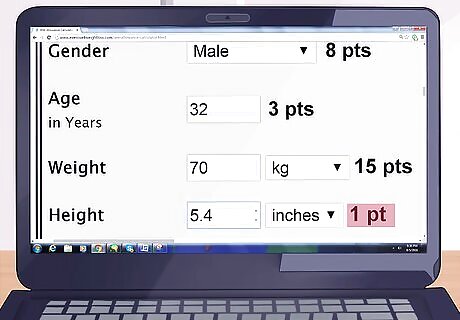
Account for your height. The taller you are, the more points you get. a) Between 5'1" and 5'10" - 1 POINT b) 5 feet 10" or taller - 2 POINTS

Account for your activity level. The more physically active you are in general, the more calories you expend on a daily basis. Because of this, it needs to be computed into your daily points allowance. What is your activity level? a) mainly sitting - 0 POINTS b) mainly standing, sometimes sitting - 2 POINTS c) mainly walking, sometimes standing - 4 POINTS d) physically exhausting - 6 POINTS

Add all your points up above. This is how many points you are allowed to eat each day. However, keep in mind that you have 35 flex points that can be used throughout the week, too. What's more, physical activity counts as negative points. If you've worked out that day, you may get a few bonus points under your belt to reduce the points you acquire with meals.

Calculate the points in your food. Now that you know your daily allowance, it's time to know how many points are in the foods you're eating. The original system is pretty straightforward, at least in comparison to its newer counterpart. Here's the formula: p=(cal/50) + (fat/12) - (fiber/5) In simpler terms: the number of points = calories / 50 + fat grams / 12 - fiber / 5 However, only fiber up to 4 is used. So if your dish has 10 grams of fiber...you still use 4. Don't ask. But yes, that is a minus sign; fiber makes your food healthier, so it's fewer points.




















Comments
0 comment